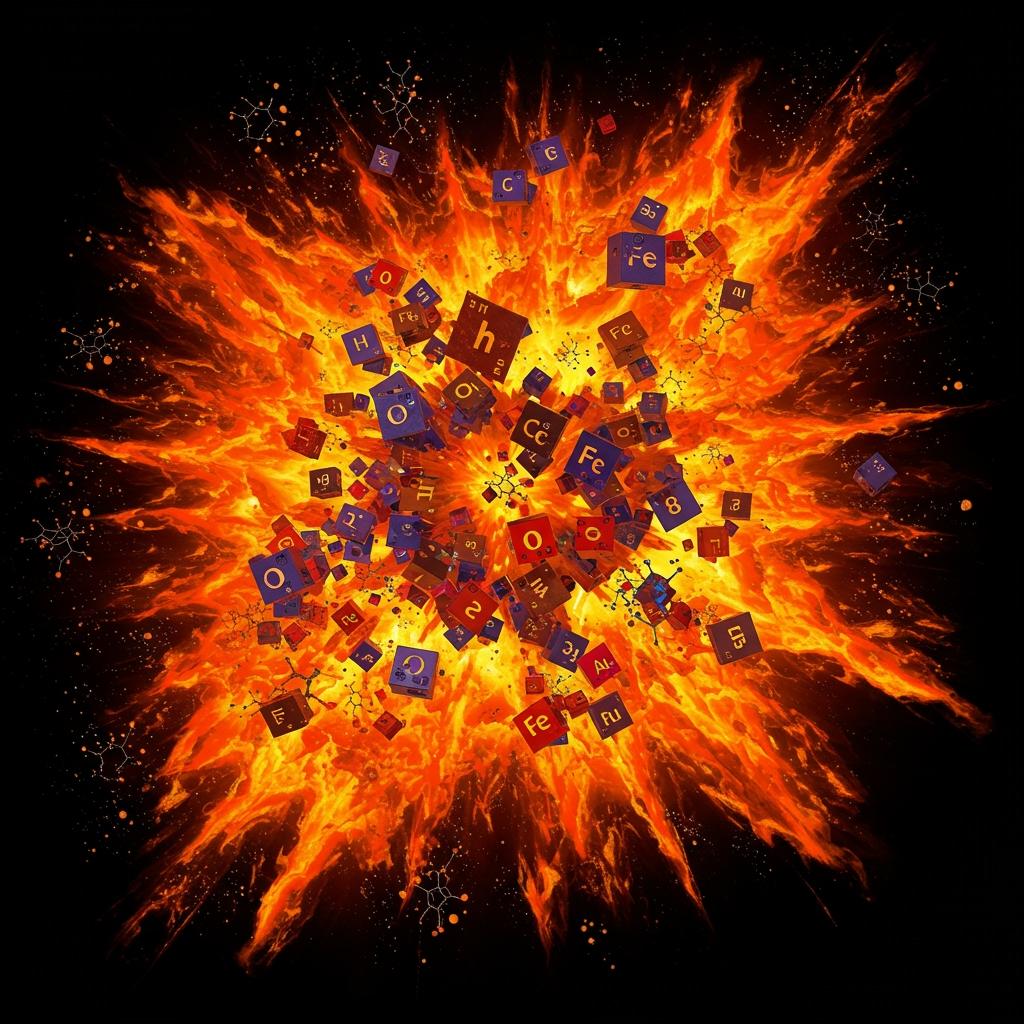What Would Happen If You Mixed Every Chemical Element Together?
 Imagine mixing every element on the periodic table—what kind of chemical fireworks would you get?
Imagine mixing every element on the periodic table—what kind of chemical fireworks would you get?
By Peter Teoh, Science Writer
Have you ever wondered what would happen if you just grabbed every single chemical element from the periodic table and dumped them all into one giant pot? Would it explode? Fizzle out? Or turn into something completely new? Let’s dive into this wild science experiment that’s never been done but is fascinating to imagine.
The Periodic Table: A Quick Refresher
Before we mix things up, here’s a quick reminder: the periodic table holds 118 known chemical elements, from the lightest, hydrogen, to the super heavy, oganesson. Each element is a unique type of atom with its own properties—some are metals, some gases, some radioactive, and some even glow in the dark!
What Happens When Elements Meet?
Elements can combine in different ways. Sometimes they react and form compounds, like salt (sodium + chlorine) or water (hydrogen + oxygen). Other times, they just sit side-by-side without reacting, forming mixtures like air (a mix of nitrogen, oxygen, and other gases).
When you mix all elements:
-
Explosive Reactions: Some elements, like alkali metals (think sodium or potassium), are extremely reactive, especially with oxygen or water. If these meet their reactive partners, they can cause violent explosions or fires. Imagine lithium instantly sparking with oxygen!
-
Radioactive Chaos: Several elements are radioactive, meaning their atoms break down, releasing energy and particles. Combining radioactive elements could create a radioactive stew that’s dangerous and unstable.
-
Noble Gases Chill Out: Elements like helium, neon, and argon are noble gases. They’re very shy and don’t like to react with others. So, parts of this mix would just float around doing nothing.
-
Metals Form Alloys or Compounds: Metals might melt and mix to form alloys, like steel or bronze. But when mixed with nonmetals, they might form new compounds or even spark reactions.
-
Some Elements Don’t Mix Easily: Certain elements prefer their own company or don’t dissolve well with others, resulting in a complex mixture rather than a uniform substance.
The Science Behind the Chaos
Chemistry tells us that when atoms meet, they try to reach a stable state by gaining, losing, or sharing electrons. This is why reactive elements combine to form compounds. But with 118 different elements, the reactions would be incredibly complex—some fast and violent, some slow and subtle.
-
Combination Reactions: When two or more elements react to form a new compound, like magnesium burning in oxygen to make magnesium oxide, it’s called a combination reaction.[1]
-
Physical Mixtures vs. Chemical Compounds: Not every mix is a chemical reaction. Sometimes elements just form mixtures, like copper and zinc in brass, which you can physically separate.[5]
-
Phase Matters: Whether elements are solids, liquids, or gases changes how they interact. Liquids mix more easily, solids less so, and gases can react if they collide often enough.[3]
What Would It Look Like?
If you could actually put all elements into a single container (which is practically impossible), the result might look like a swirling, glowing pot of molten metals, vapors, and powders. You’d see bursts of light from explosions, clouds of toxic or colorful gases formed by reactions, and possibly intense heat from energy released.
But Could It Trigger a Nuclear Reaction?
Nuclear reactions involve changes in the nucleus of atoms, which is different from chemical reactions happening in the electron clouds. Mixing elements chemically wouldn’t cause a nuclear meltdown or explosion. Nuclear reactions require very specific conditions like those in reactors or stars.[4]
The Bottom Line
Mixing every element together would be a chaotic mix of explosive chemical reactions, toxic gases, glowing metals, and radioactive hazards. It’s a recipe for disaster, not a new element or miracle material. But thinking about it helps us understand how elements interact and why the periodic table is arranged the way it is.
So next time you look at the periodic table, remember each element has its own personality—and mixing all of them is like throwing a wild party where some guests get along, some fight, and others just watch from the sidelines!
Side Notes
-
Why don’t noble gases react? Because their outer electron shells are full, making them very stable.
-
What’s an alloy? A mixture of metals (like bronze is copper + tin) that often has better properties than the metals alone.
-
Radioactivity: Some elements like uranium slowly decay, releasing energy that can be harnessed or cause harm.
Trending Sidebar
-
The Most Reactive Elements: Alkali metals like potassium and cesium react explosively with water.
-
Unusual Elements: Did you know francium is so rare and reactive, scientists have barely studied it?
-
Chemical vs. Nuclear Reactions: Learn the difference between reactions that change electrons vs. nuclei.